Will I be being?PERFECT have been I had been I have beenPresent Perfect (Summary) be, do, have and irregular verbs in the Present Perfect Diagram of the Present Perfect Form of the Present Perfect Questions in the Present Perfect Short/contracted forms and long forms in the Present Perfect Signal words for the Present Perfect Spelling of verbs in the Present Perfect Use of the Present Perfect

Present Perfect Tense English Esl Worksheets For Distance Learning And Physical Classrooms
Be present perfect tense
Be present perfect tense-The Present Perfect Tense #7 Has Got and Have Got The idioms has got and have got seem to be present perfect tense they use has and have and these forms are followed by a past participle (one of the two past participles of get got and gotten )The present perfect verb tense is a little difficult in English – it is used in several different ways, and there are lots of rules to remember This lesson will teach you everything you ever wanted to know about the present perfect – try the four quizzes with grammar
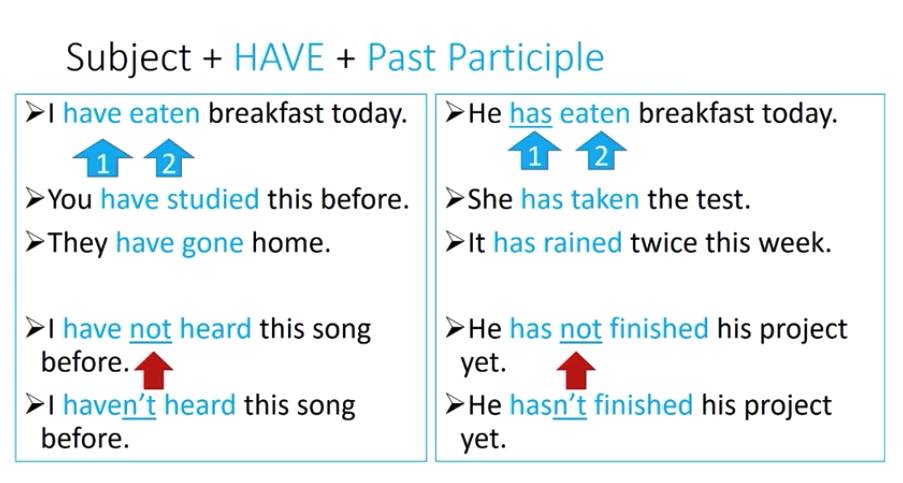



Present Perfect Tense Asean Scholarships
The present perfect is a grammatical combination of the present tense and perfect aspect that is used to express a past event that has present consequences The term is used particularly in the context of English grammar to refer to forms like "I have finished" The forms are present because they use the present tense of the auxiliary verb have, and perfect becauseDefine present perfect the definition of the present perfect tense is a tense denoting an action that occurred at an unspecified time before now In summary, the present perfect tense is formed by Subject has/have past participle of verbStudents have to put the verbs into the correct tenses present perfect or past simple 87,628 Downloads PRESENT PERFECTfor, since, just, already, yet By anarti Some exercises to practice the present perfect tense Thanks for sharing )) ,319 Downloads
The present perfect is a compound tense in English, as in many other languages, meaning that it is formed by combining an auxiliary verb with the main verb For example, in modern English, it is formed by combining a presenttense form of the auxiliary verb "to have" with the past participle of the main verbThe Present Perfect Tense is used to indicate a link between the present and the past It is used to describe An action that started in the past and continues in the present For example, He has worked in this company since 04 An action performed during a period that has notThe present perfect tense is a tense used in present to indicate the action that has taken place at some specific time It uses auxiliary verb and past participle for the main verb ie verb ed Some examples of present perfect tense are – I have watched this movie before, He
The present perfect tense is used when talking about experiences from the past, a change or a situation that has happened in the past but is still continuing today This tense is an important part of English grammar since it demonstrates that actions or events in the past have an effect on the present situation Present Perfect Tense is used to express the incidents that have occurred in the past without specifying the actual time of occurrence As the time of exact occurrence of the event cannot be ascertained this tense is used to express the events that have occurred in the near past Some examples of sentences in Present Perfect Tense areThe Present Perfect tense is a rather important tense in English, but it gives speakers of some languages a difficult time That is because it uses concepts or ideas that do not exist in those languages In fact, the structure of the Present Perfect is very simple The problems come with the use of the tense
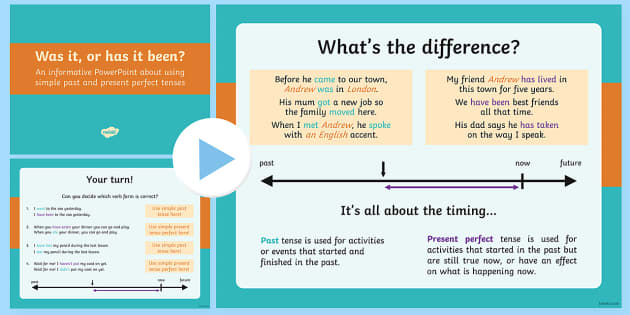



Present Perfect Tense Powerpoint Slides Primary Resources
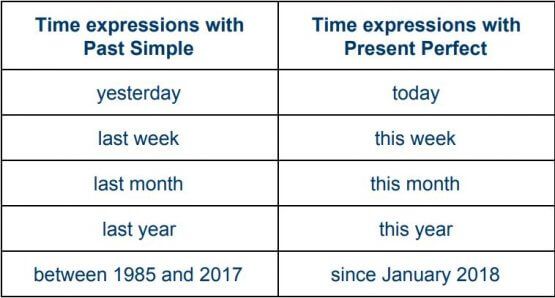



Using The Present Perfect Tense In English Wall Street English
The present perfect continuous tense (also called "present perfect progressive") is used to talk about the duration of an action that started in the past and continues in the present Examples I have been working on this project for 3 weeksExercise on Present Perfect Simple Put the verbs into the correct form (present perfect simple) I (not / work) today We (buy) a new lamp We (not / plan) our holiday yet Where (be / you) ?The Present Tense – Present Perfect Answers Directions Complete the following sentences in the present perfect simple tense 1) She has been (to be) happy all day 2) It has always snowed (to snow) here in December 3) Dan has been (to be) sick for three days 4) Li and Susan have tried (to try) four times already and will not give up
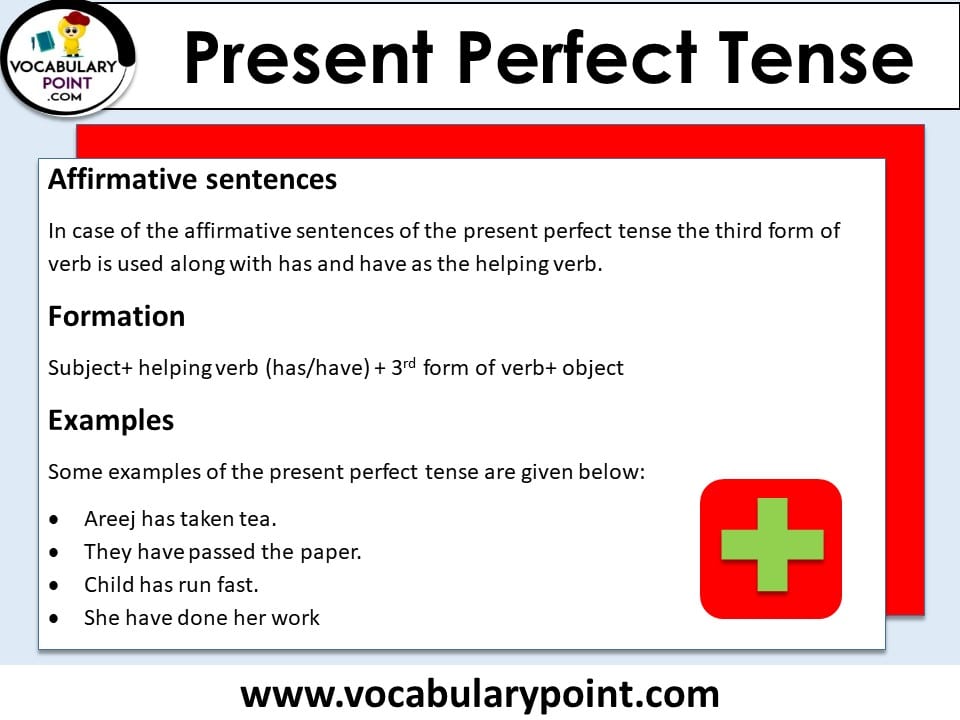



Present Perfect Tense Examples Sentences Formation Vocabulary Point




Examples Of Present Perfect Tense Or Sentences Onlymyenglish
In the perfect tenses, the verb (to) have is always the auxiliary verb In the present perfect tense, the main verb is in the past participle form This is not difficult for regular past tense verbs For regular verbs, the past participle form of the verb is the same as the past tense verb, so you just add ed! The auxiliary verb of perfect tenses is 'to have' which needs to be used in present tense Make sure to conjugate 'to have' to agree with the subject 'To have' is always followed by the Past Participle of the main verb Therefore, we need to Present Perfect Tense Present perfect tense uses the auxiliary verbs 'have' or 'has' I have called You have listened We have eaten She has gone to bed As you can see here, we are discussing



1




60 Present Perfect Tense Example Sentences English Vocabs
Ans Present Perfect tense talks about the action which has just gotten over and Presents perfect continuous talks about the action which was going on from the past and still goes on for some time in the present 2 Give me an example of Interrogative negative sentence for Present Perfect, Present Perfect Continuous and Present Continuous Structure of Present Perfect Subject conjugated form of 'to have' Past Participle of Main Verb Object The auxiliary verb of perfect tenses is 'to have' which needs to be used in the first form in present tense Make sure to conjugate 'to have' to agree with the subjectThe present perfect is a verb tense which is used to show that an action has taken place once or many times before now The present perfect is most frequently used to talk about experiences or changes that have taken place, but there are other less common uses as well Read on for detailed descriptions, examples, and present perfect exercises




The Present Perfect Tense Blog In2english
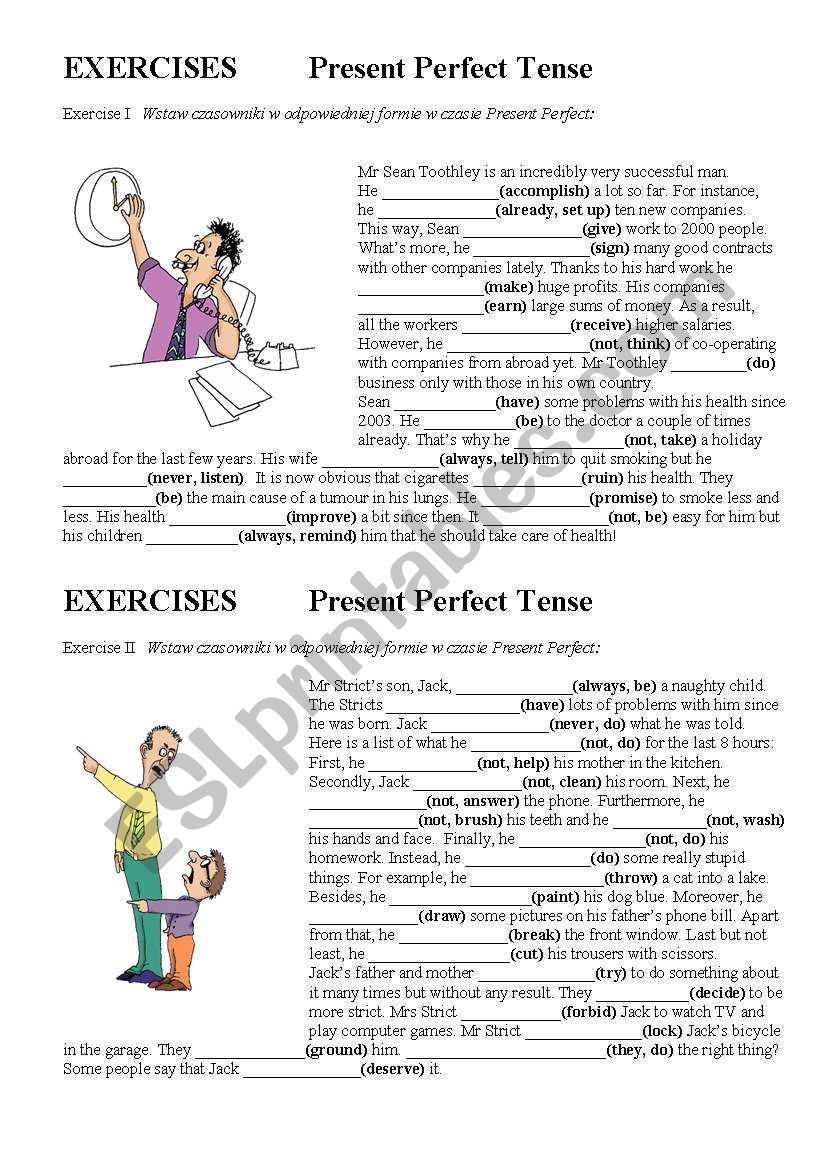



Present Perfect Tense Gap Filling Esl Worksheet By Mrmatura
CONTINUOUS be being I was being I am being I will be beingI was not being I am not being I will not be being?The Present Perfect Tense #3 More on "Continuing Verbs" and "OneTime Verbs" We know that one common use for the present perfect tense is in showing actions or situations that began in the past and continued until now Sometimes, however, this use is confusingbecause some verbs are not normally used to show a continuing actionSIMPLE present simple or past simple except future will be I was I am I will beI was not I am not I will not be?




Present Perfect Tense Download Complete Pdf Engdic




Present Perfect Tense English Esl Worksheets For Distance Learning And Physical Classrooms
Present perfect tense is for actions that happened in the past and also have a connection to the present or future Learn when to use present perfect tenseThe present perfect progressive tense is used for a continuous activity that began in the past and continues into the present or recently ended This page has lots of examples of the present perfect progressive tense, explains how to form it, and has an1 The earth has been here for billions of years ( be ) 2 We have been playing cards for the last few hours ( play ) 3 We have been having / have had problems with our new car recently (have ) 4




Skillslelo Present Perfect Tense Chart Presentperfect Facebook




10 Free Printable Present Perfect Tense Worksheets Kiddosheets
Present perfect form We form the present perfect tense with the verb have and the past participle of the verb The past participle is the same as the past simple (ed) for regular verbs For irregular verbs, it's the form in the 3rd column Download fullsize image from Present perfect The present perfect continuous tense (also known as the present perfect progressive tense) shows that something started in the past and is continuing at the present time The present perfect continuous is formed using the construction has/have been the present participle (root ing)The present perfect tense says that an action was completed at a time before the present, and the results or consequences of the action are relevant now The present perfect is formed using the present tense of the verb "to have" and the past participle of the main verb The past perfect tense says that an action was completed at a time before another action happened in the past




9 Present Perfect Tense Pdf Verb Grammatical Tense
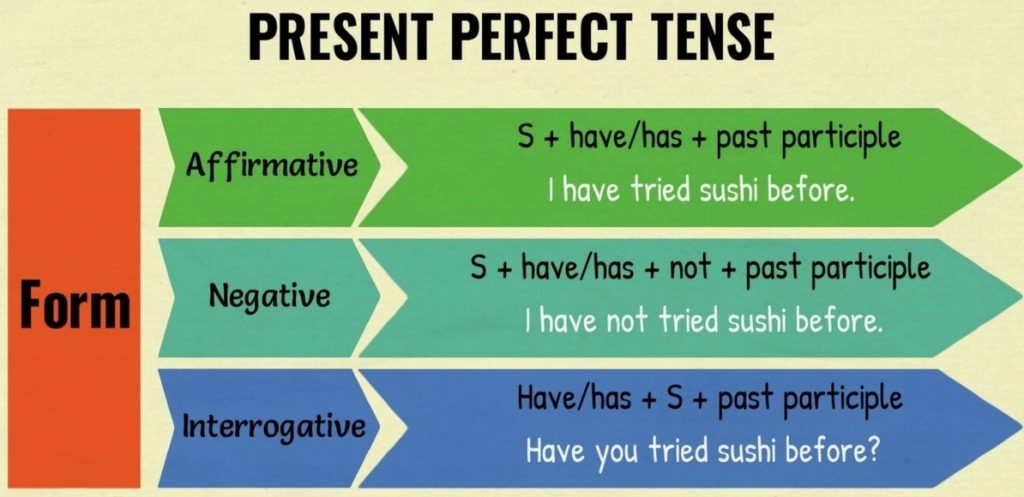



The Present Perfect Tense The Argentinian Problem En Ingles
Verb Tense Exercise 5 Simple Past and Present Perfect f t p Using the words in parentheses, complete the text below with the appropriate tenses, then click theThe present perfect tense refers to an action or state that either occurred at an indefinite time in the past (eg, we have talked before) or began in the past and continued to the present time (eg, he has grown impatient over the last hour) This tense is formed by have/has the past participle100 Sentences of Present Perfect Tense Examples of Present Perfect Tense 1My sister has already made a big cake 2You have grown since the last time I saw you 3It hasn't drunk the water 4I have seen that movie 5We haven't received any mail since we were retired 6They haven't gone to the shopping center 7Have they played the piano?
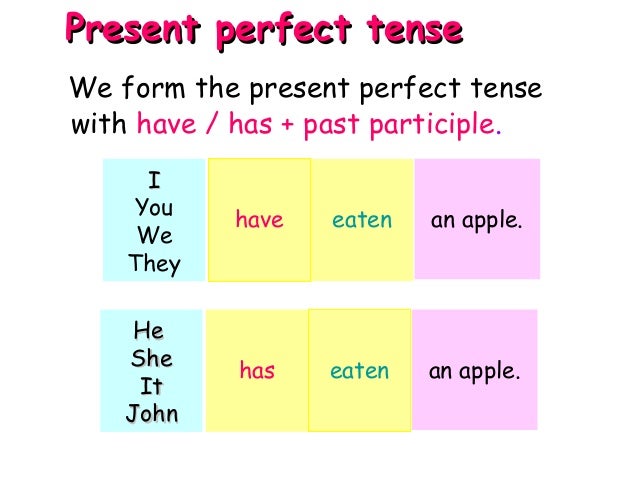



Present Perfect Tense Slideshow
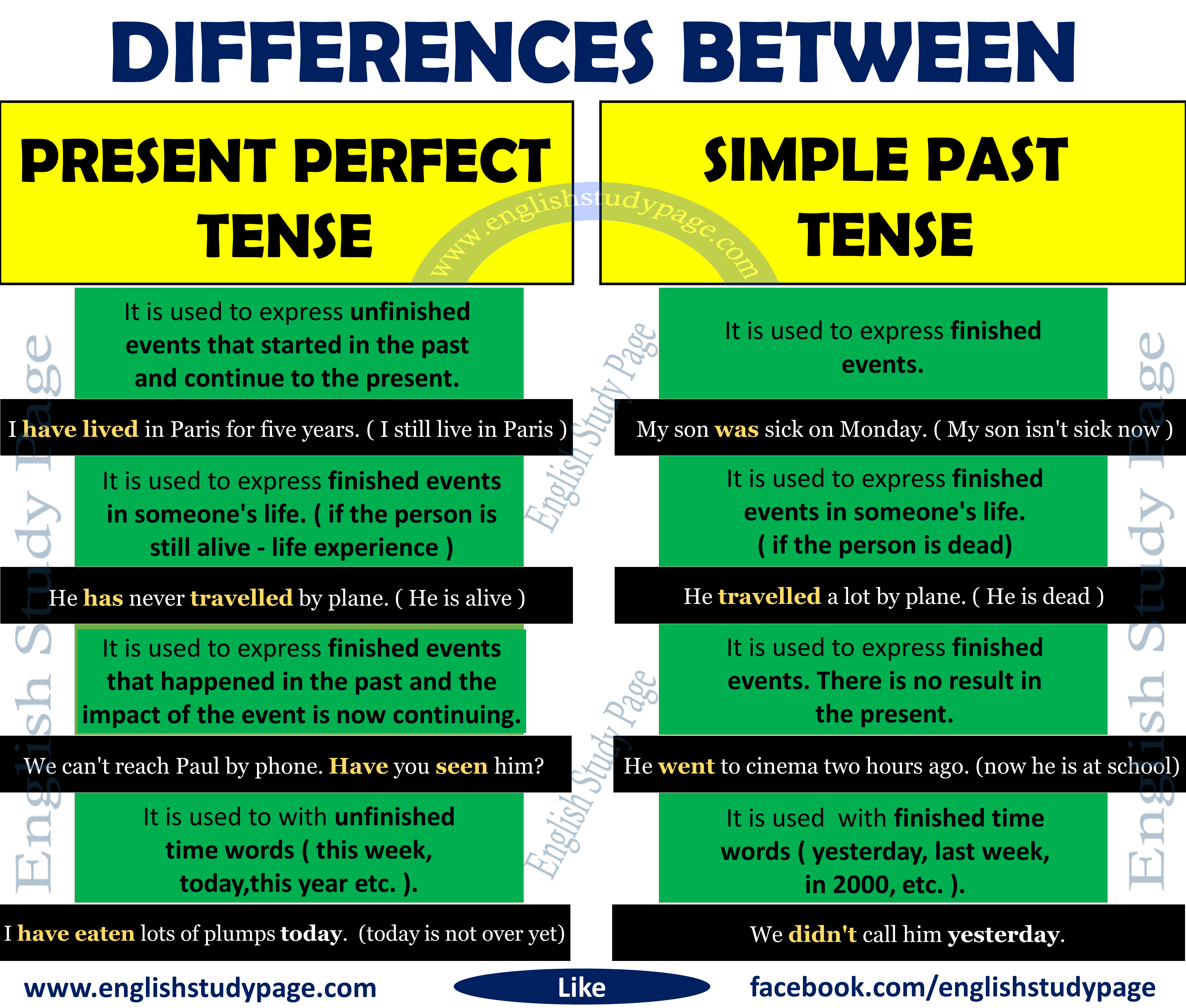



Differences Between Present Perfect Tense And Simple Past Tense English Study Page
Present perfect tense adalah suatu bentuk kata kerja yang digunakan untuk menyatakan suatu aksi atau situasi yang telah dimulai di masa lalu dan masih berlanjut sampai sekarang atau telah selesai pada suatu titik waktu tertentu di masa lalu namun efeknya masih berlanjut Present Perfect Positive Sentences I have = ´ve been to Moscow You have = ´ve finished the exercise He Has = ´s just gone home She Has = ´s already had a holiday this year It Has = ´s broken!The present perfect tense of the verb 'to be' 'have been' or 'has been' and The present participle of the main verb 'ing Some examples of present perfect continuous tense are,




Present Perfect Tense Vs Past Simple Tom S Story A Comical Story Of Tom The Esl Student Video Youtube
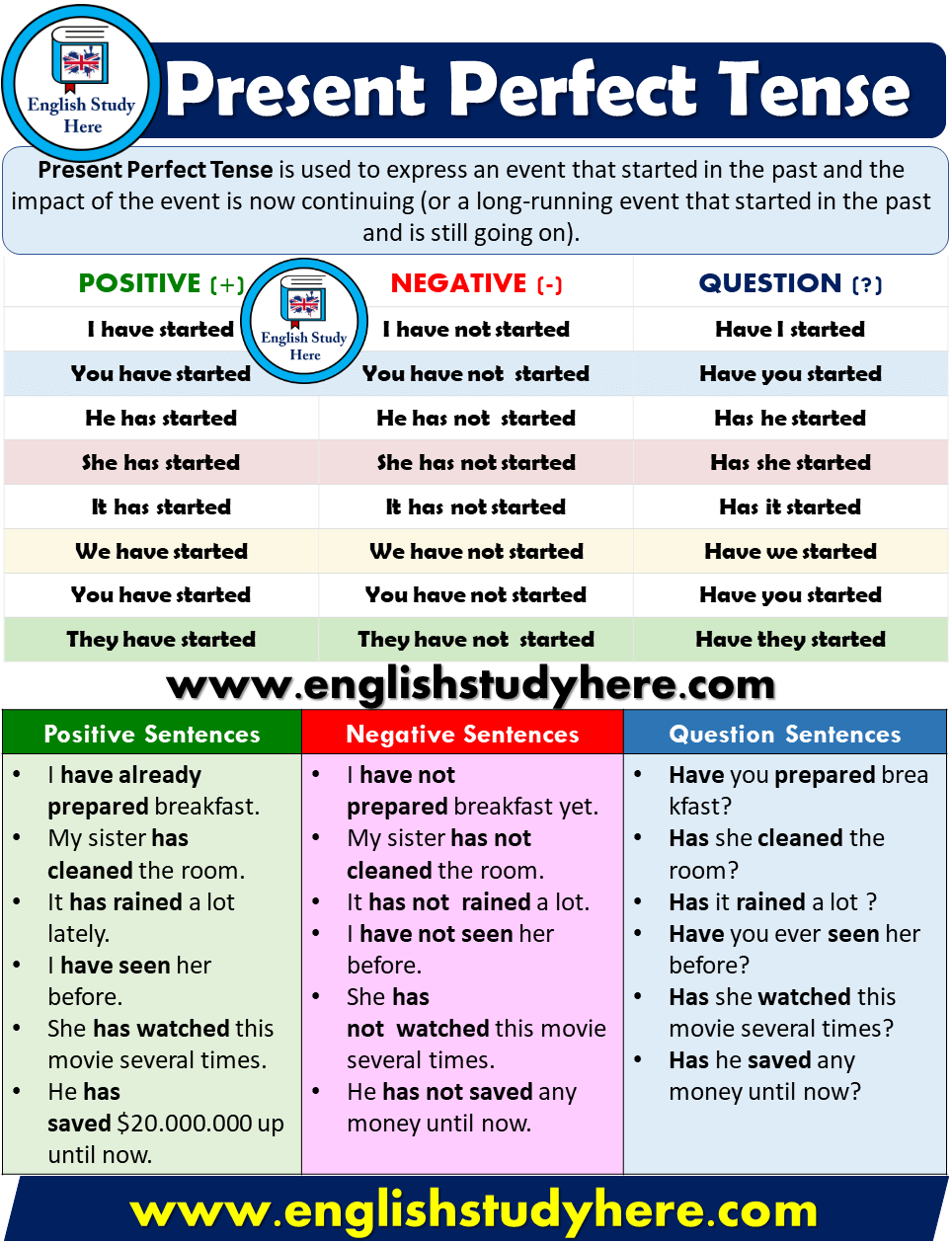



Present Perfect Tense Detailed Expression English Study Here
12 tenses (be) past present future;I thought about using has expired (present perfect tense) since it's possible that the passport expired some time in the past and until now it is still expired If this is correct, since it's not pastunreal because it uses present perfect tense, what willThe present perfect tense is used to describe actions that started in the past, but still have effect on the present The focus in the present perfect tense is the result of the action Generally, the time at which the action started (or stopped) is not important Every sentence in this tense has a verb to have as an auxiliary verb in addition
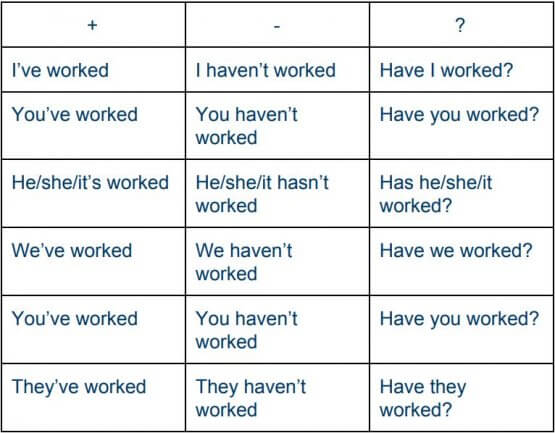



Using The Present Perfect Tense In English Wall Street English




Present Perfect Tense Definition Structure And Examples
To make the positive present perfect tense, use 'have' / 'has' the past participle Make the past participle by adding 'ed' to regular verbs (for example, 'play' becomes 'played') There are a few verbs that change their spelling when you add 'ed' (for example, 'study' becomes 'studied') We also have some completely irregular verbs To Be Present Tense As with any verb, the present tense of the verb to be can take several forms the indicative or simple present, the present perfect, and the present continuous The tables below show how to conjugate to be in these forms Indicative Mode SingularPresent Perfect (Kurzübersicht) be, do, have im Present Perfect Bildung von Sätzen im Present Perfect Fragen im Present Perfect Grafische Darstellung des Present Perfect Kurzformen und Langformen im Present Perfect Schreibweise der Verben im Present Perfect Signalwörter im Present Perfect Verwendung des Present Perfect




Present Perfect Tense Grammar English Vocabulary Envocabulary Com




Present Perfect Tense Interrogative Sentences Part 2 Upper Elementary With Key B W English Esl Worksheets For Distance Learning And Physical Classrooms
For information on how to make the present perfect, click here Download this explanation in PDF here We use this tense for unfinished and finished actions Unfinished Actions 1 We use this tense when we want to talk about unfinished actions or states or habits that started in the past and continue to the present Usually we use it to say 'how long' and we need 'since' or 'for' The present perfect tense may refer to things that happened in the past, but they normally continue into the present, or refer to a present reality, such as in the case of something that has happened several timesTENSES T 27 wwwenglishgrammarat Fill in the correct form of the Present Perfect tense!




Present Perfect Tense With Examples Definition And More




Mind Map The Present Perfect Tense English
Participles are verb forms that function as adjectives, nouns or as part of a compound verb tenses The three kinds of participles are present, past and perfect Learn about participle forms in English grammar with Lingolia's online lesson Then test yourself in the free exercisesThe present perfect tense connects the past with the present When using this verb tense, we can be talking about an action or event that occurred in the pasThe present perfect tense describes an action that began in the past (despite being a present tense) For example John has taken Sarah's advice They have fixed the fence Often, the action being described is still continuing into the present (eg, John continues to take Sarah's advice) This is how the present perfect tense differs from the simple past tense A Video Summary
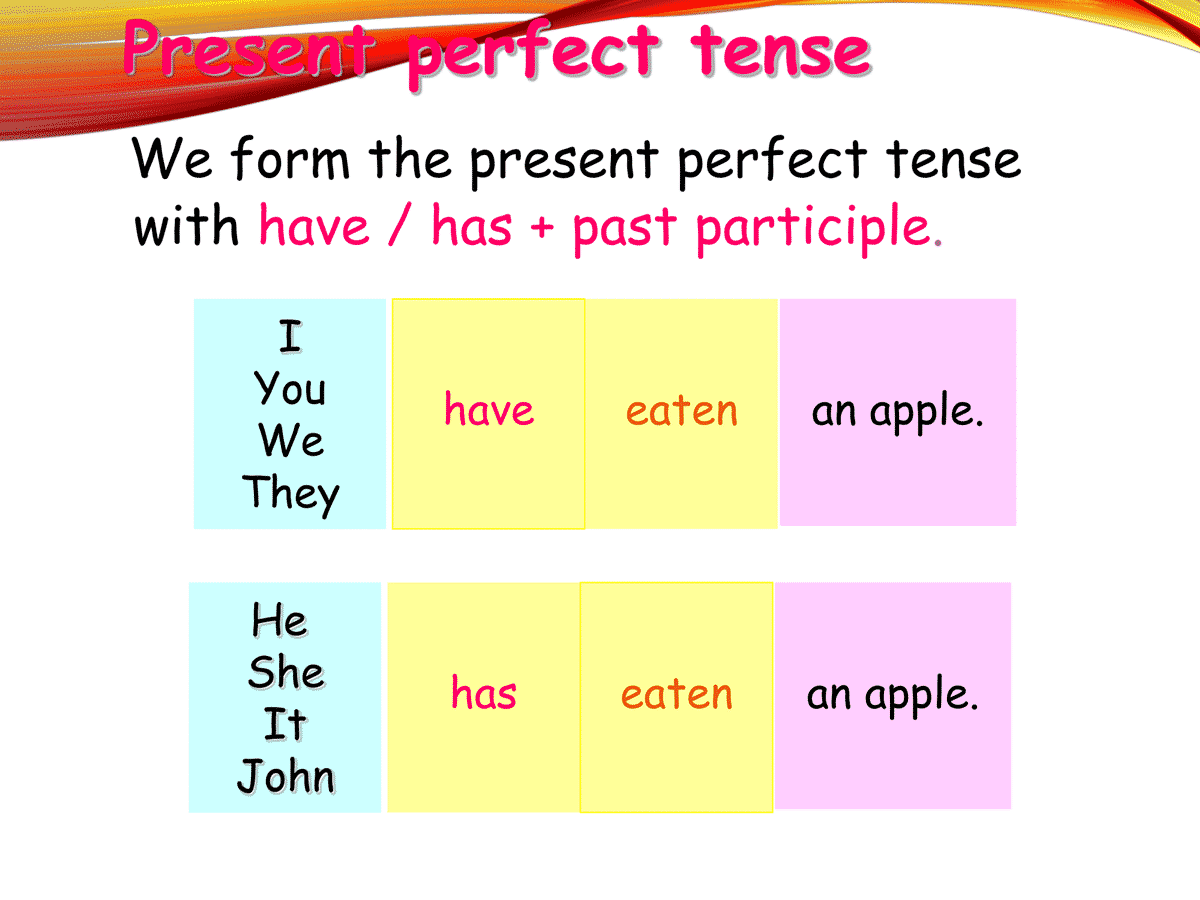



Using The Present Perfect Tense In English Eslbuzz Learning English




Present Perfect Tense Examples Of Using Present Perfect Tense After Looking At Shirley S Dairy Have You Noticed Any Use Of Present Perfect Tense If Ppt Download
We have = ´ve seen this film before They have = ´ve bought a new car 7 Present Perfect Negative Sentences I Have not = haven't been
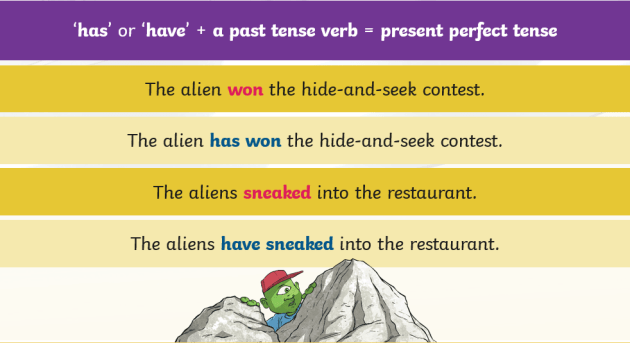



Past Perfect Tense Present Perfect Form Ks2




Present Perfect Tense Definition Useful Examples And Exercise Esl Grammar




Present Perfect Tenses Definition And Example Sentences Lessons For English
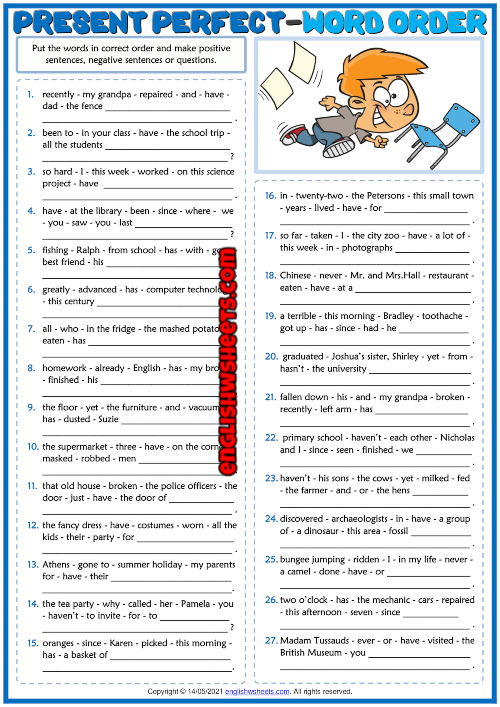



Present Perfect Tense Esl Word Order Exercise Worksheet




Present Perfect Tense Asean Scholarships




Present Perfect Tense Rules With Examples Vk Study
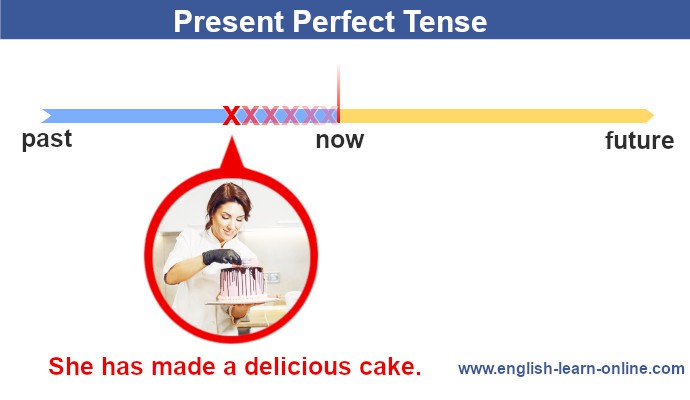



Present Perfect Tense With Games Exercises Pictures And Examples
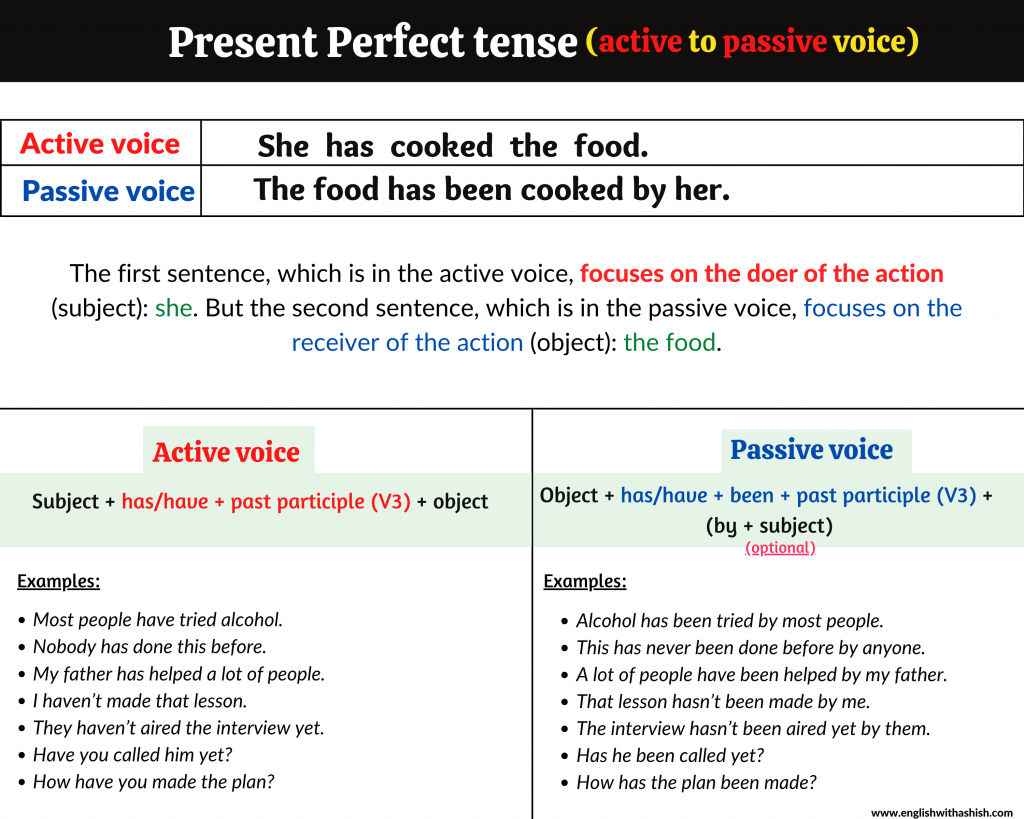



Active Voice To Passive Voice In Present Perfect Tense Examples And Practice Set




Present Perfect Tense Elementary Worksheet




Structure Of Present Perfect Tense English Study Page




Present Perfect Tense Definition Examples Rules Onlymyenglish
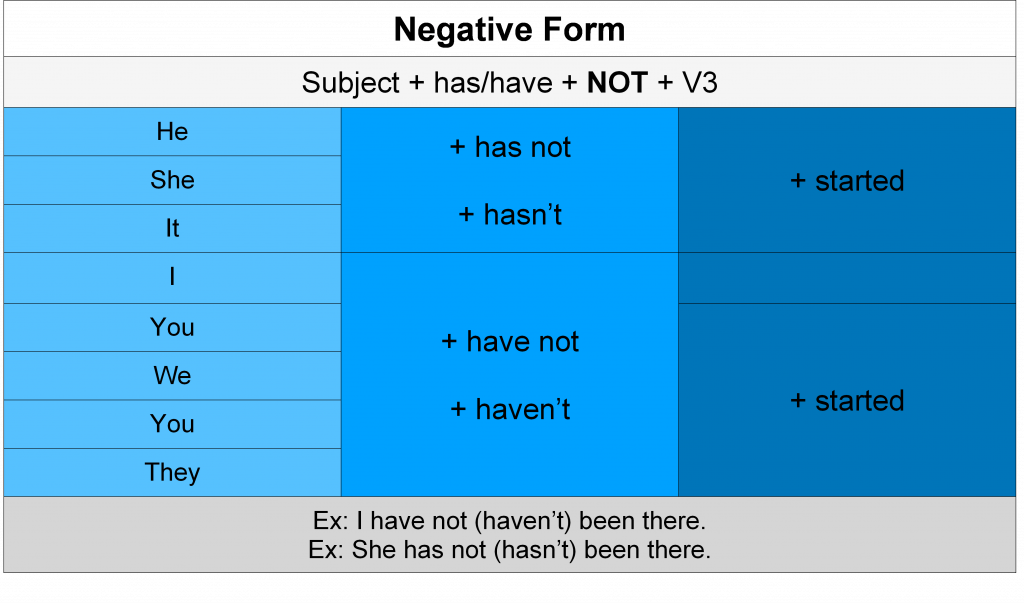



Present Perfect Tense Fun English Grammar Lessons Pocket Passport




Present Perfect Tense




The Present Perfect Tense English In Progress
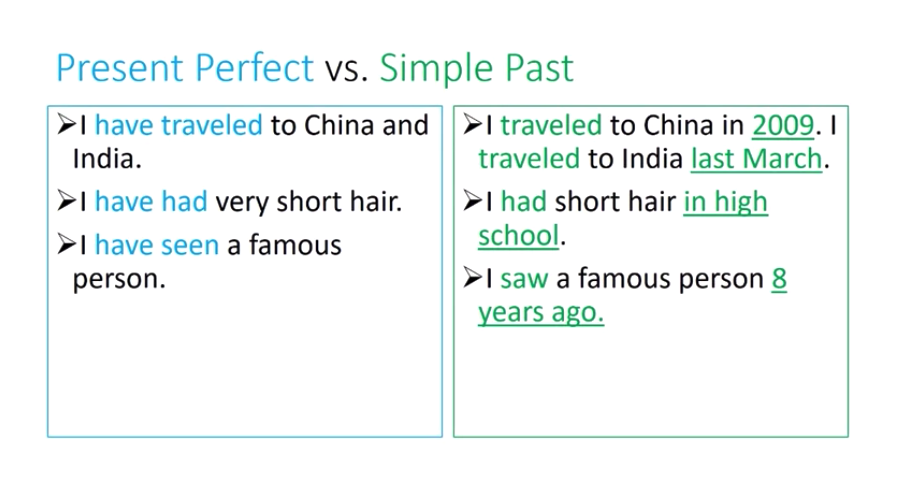



Present Perfect Tense Asean Scholarships
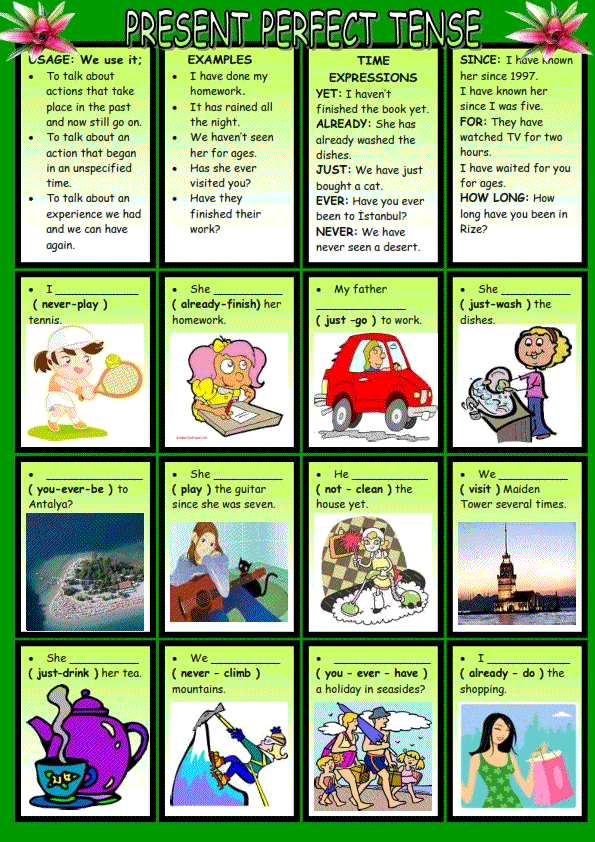



Present Perfect Tense Image Worksheets



Smart Kit Present Perfect Tense E K
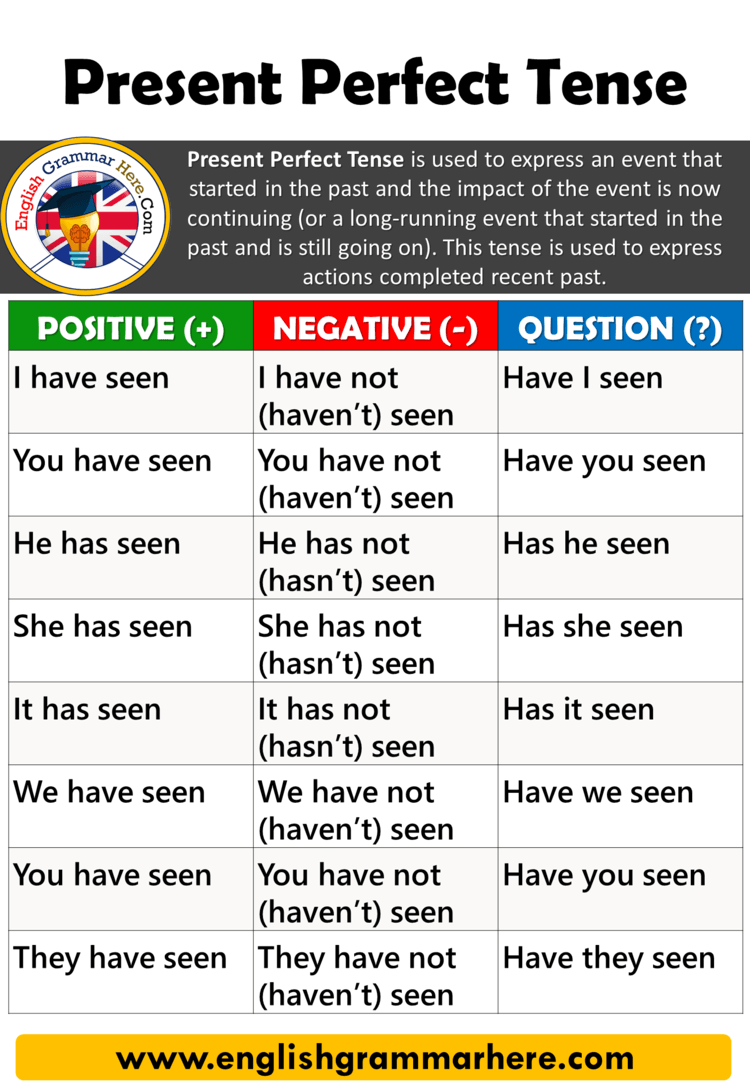



Using The Present Perfect Tense In English English Grammar Here




Present Perfect Tense Youtube
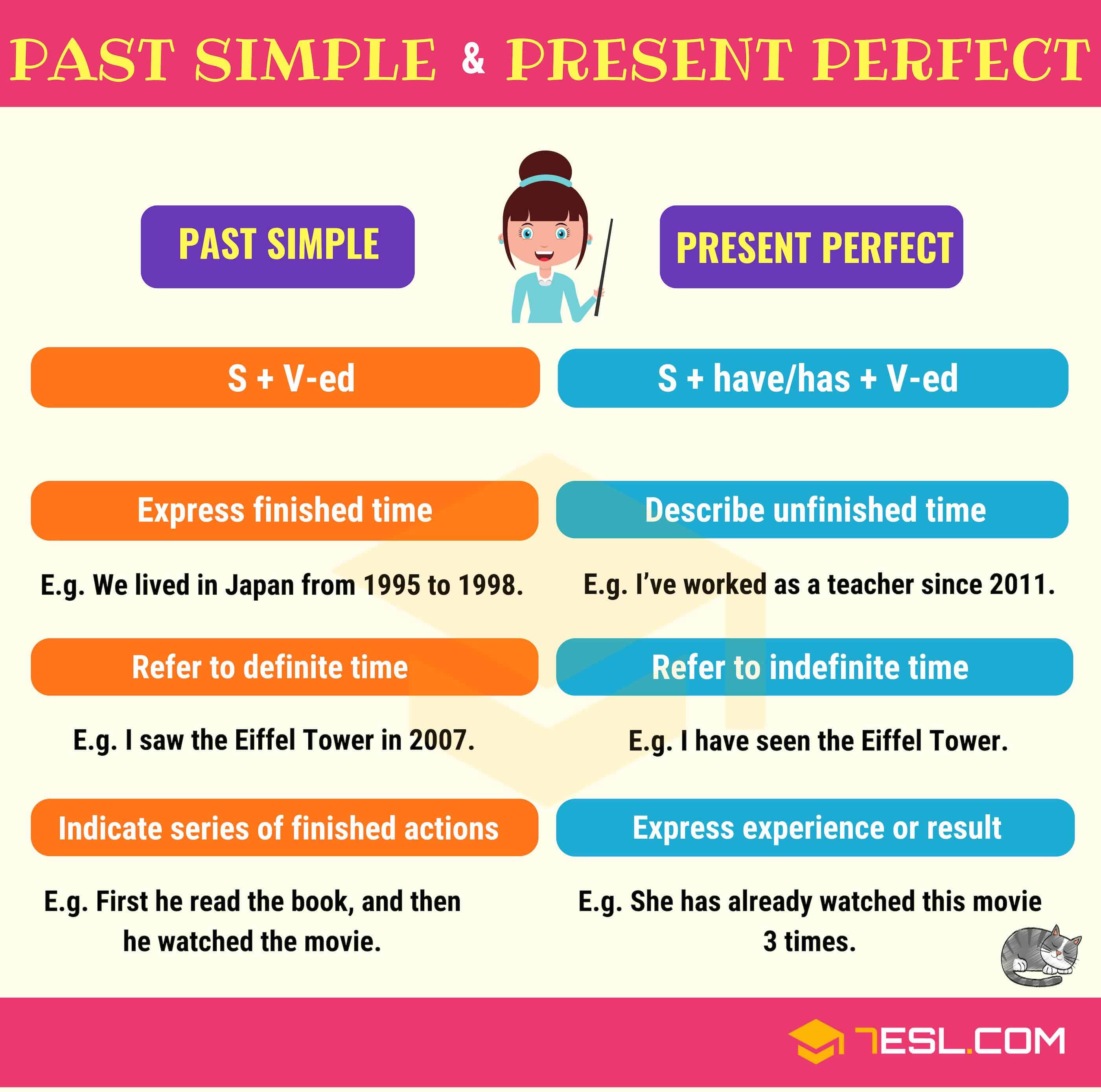



Present Perfect Vs Past Simple Useful Differences 7esl




English Learning Made Easy Simple Present Perfect Tense
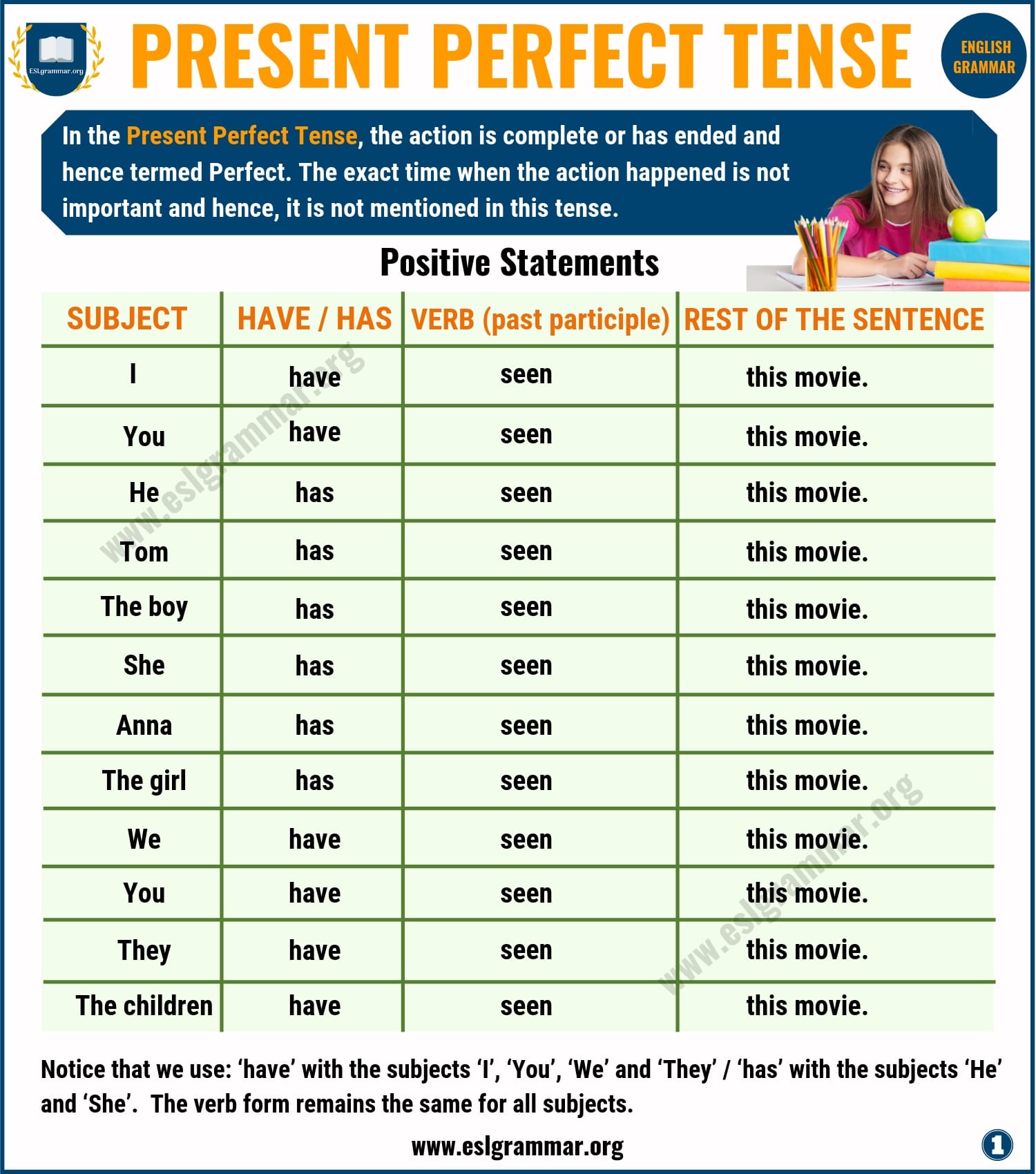



Present Perfect Tense Definition Useful Examples And Exercise Esl Grammar



Present Perfect Tense Group Sort




Present Perfect Tense




Present Perfect Tense Part 1 No 1 Institute



3
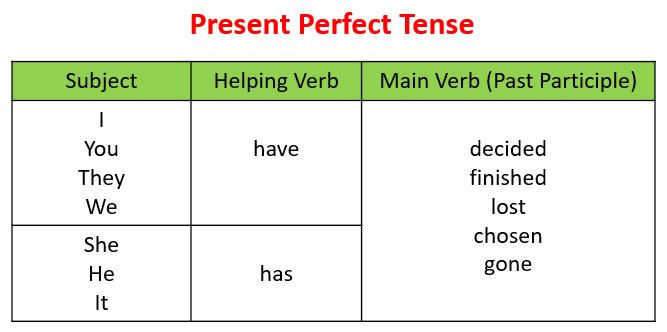



Present Perfect Tense Video Lessons Examples Explanations



1
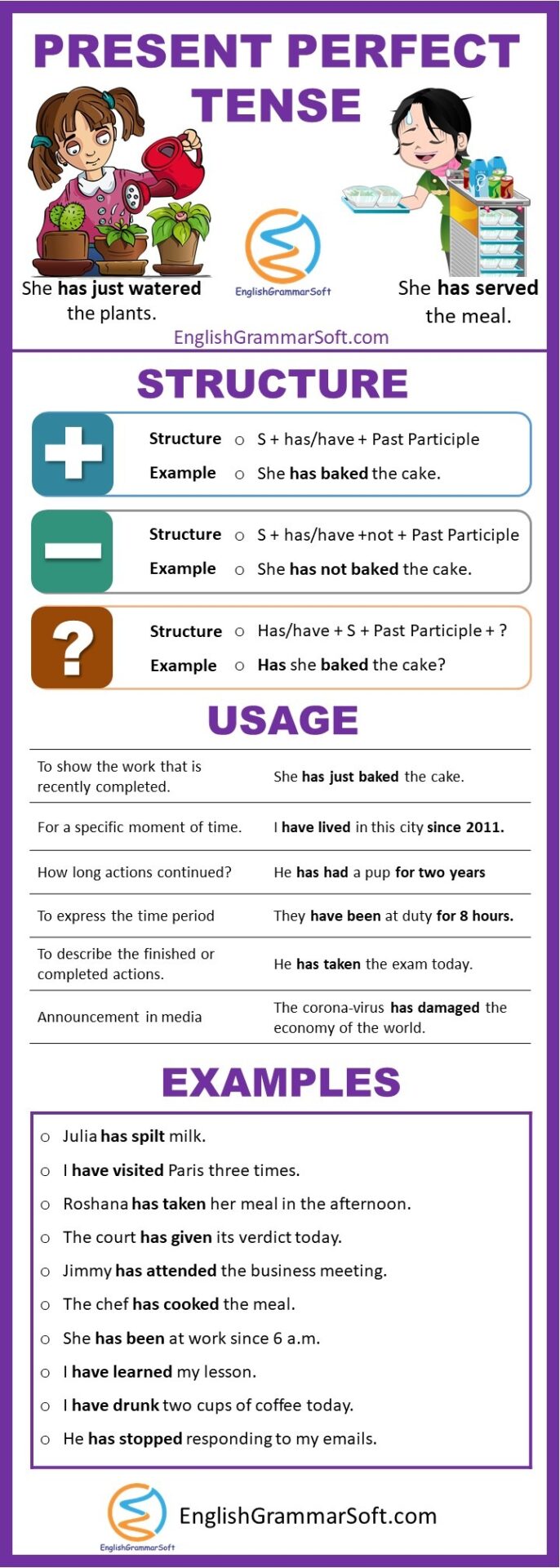



Present Perfect Tense With Examples Englishgrammarsoft




Present Perfect Verbs And Tenses




50 Present Perfect Tense Example Sentences English Vocabs
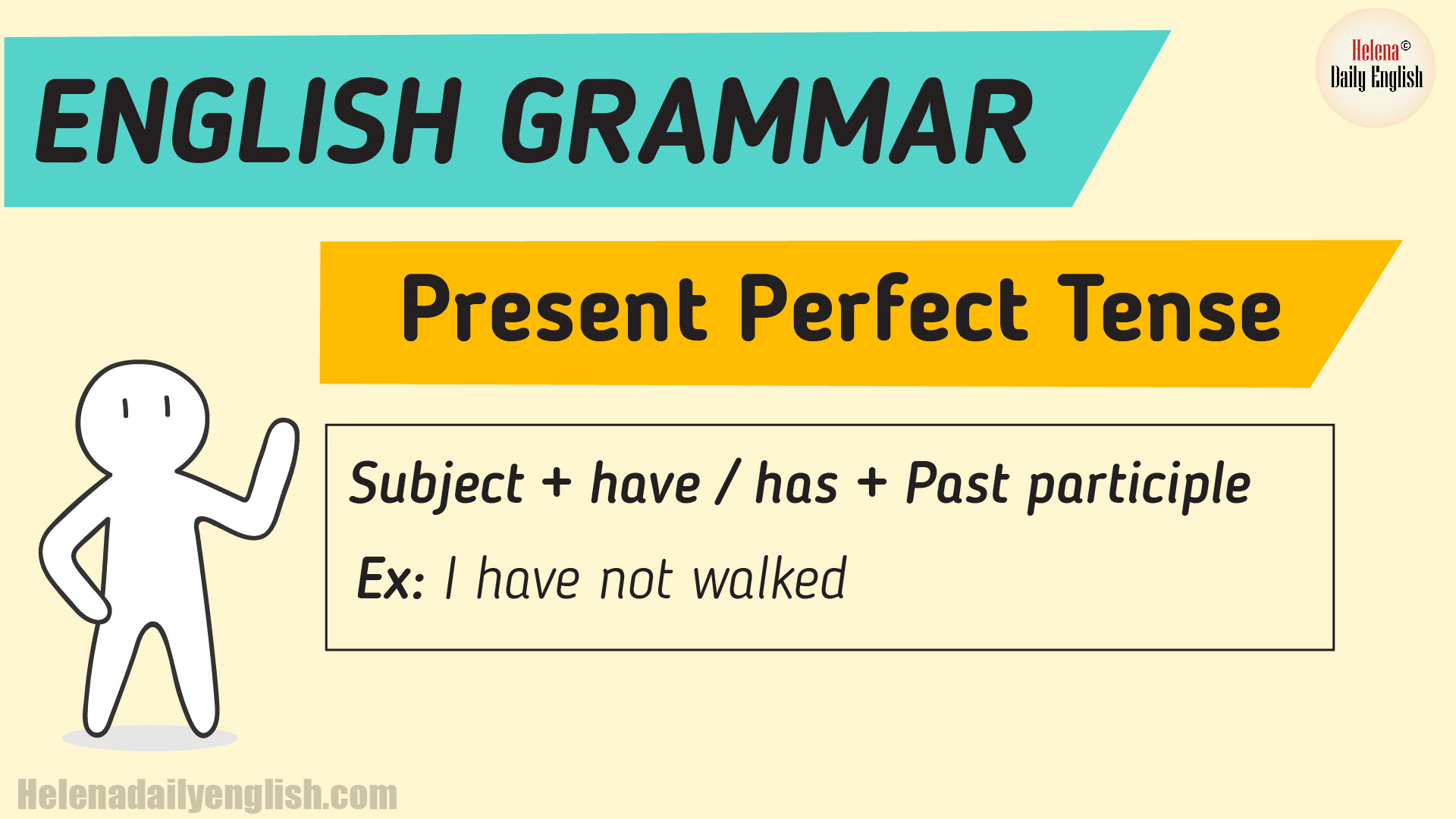



The Present Perfect Tense Example Explanation English Grammar




Topic Present Perfect Tense Lesson Goal Students Will Be Able To Learn And Use Present Perfect Tense Ppt Download



Present Perfect Tense Present Perfect U Fikri Vurgular
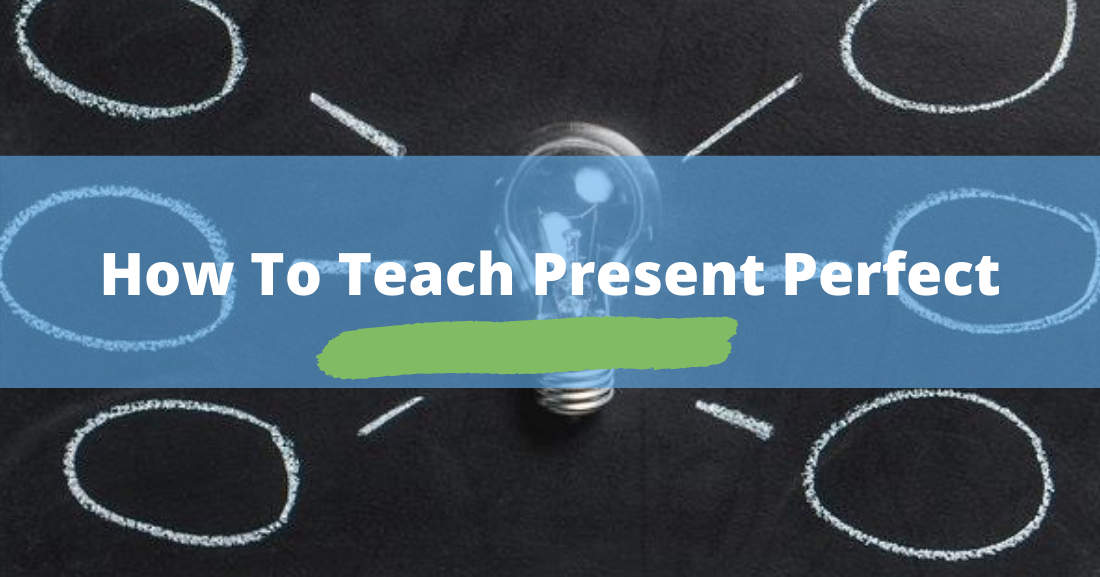



How To Teach Present Perfect Activities And Examples




The Present Perfect Tense Tenses English Present Perfect Tense Exercises Present Perfect



Category Present Perfect Tense My Mfl Box
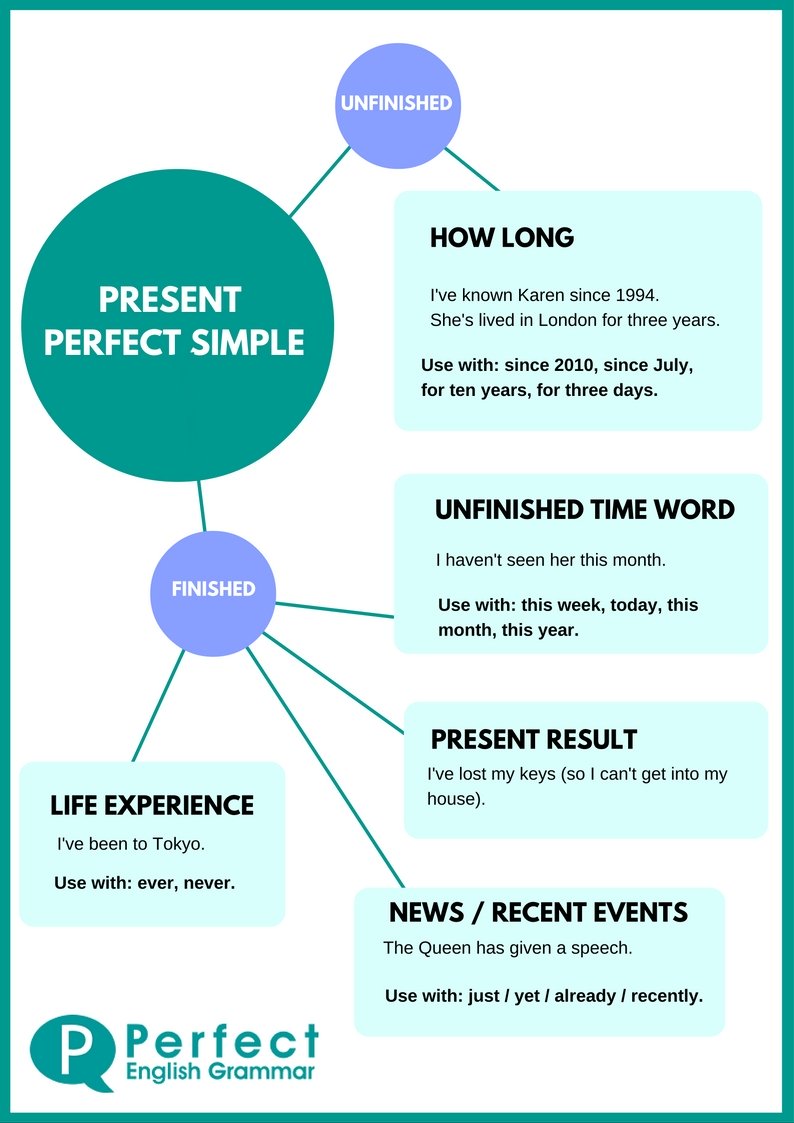



Using The Present Perfect Tense In English
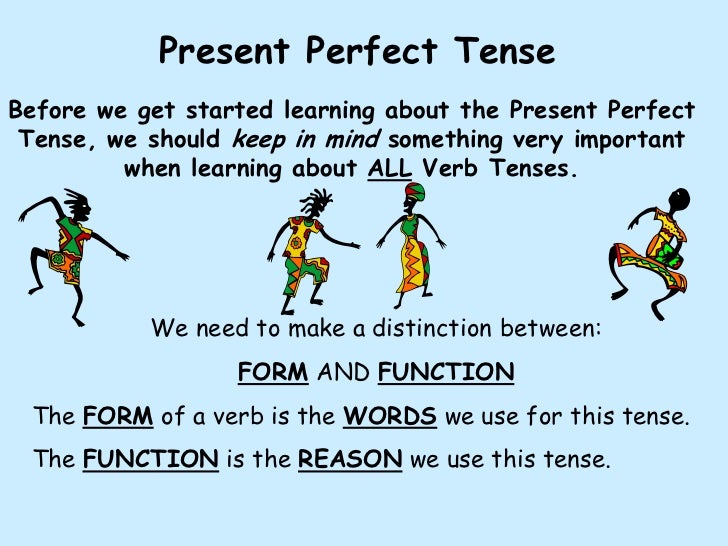



Present Perfect Tense




Present Perfect Tense English Esl Worksheets For Distance Learning And Physical Classrooms



Present Perfect Tense Grammar Explanation Games To Learn English Games To Learn English




Test English Prepare For Your English Exam




Present Perfect Tense What Is The Present Perfect Tense




Present Perfect Tense In Bengali Present Perfect Tense How To Practice Tense How To Identify Pres Youtube
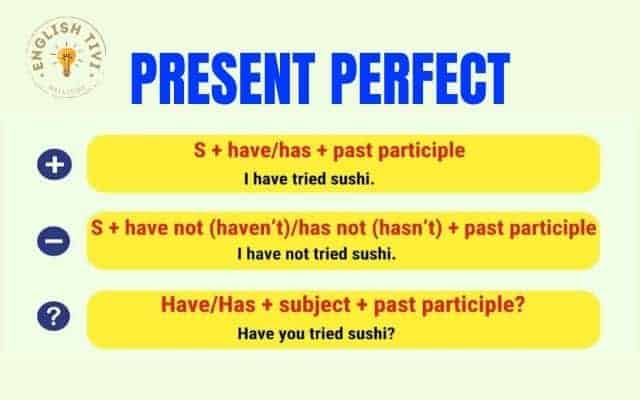



Present Perfect Tense English Grammar Tenses English Tivi



1



Present Perfect Tense Present Perfect Tense I We
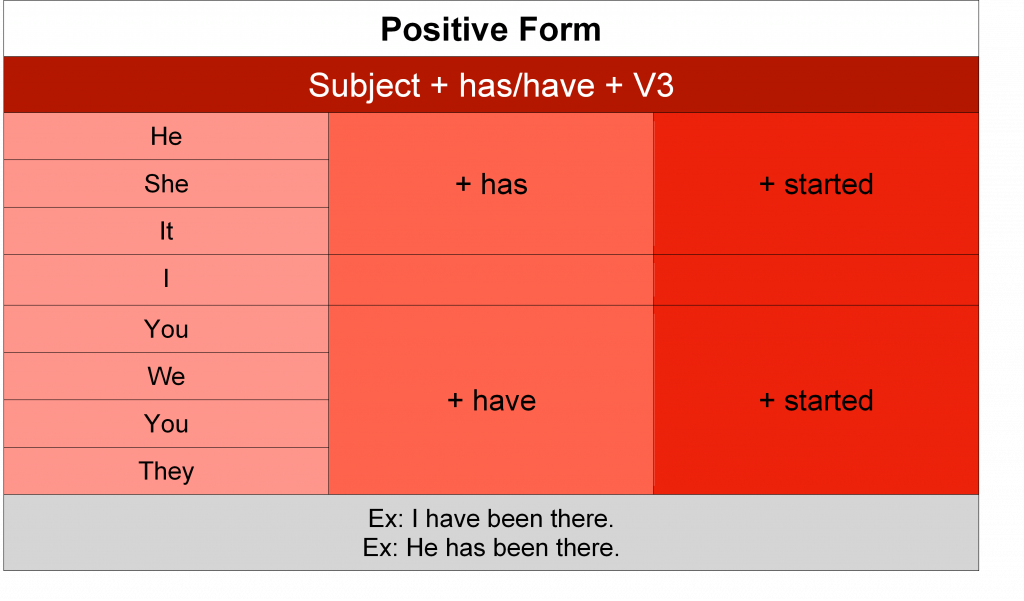



Present Perfect Tense Fun English Grammar Lessons Pocket Passport




Test English Prepare For Your English Exam



Present Perfect Tense Finished Versus Up To Now Time Games To Learn English Games To Learn English




Present Perfect Tense English Esl Worksheets For Distance Learning And Physical Classrooms




Present Perfect Tense Structure 100 Examples Engrabic




Present Perfect Tense Good Examples And Important Uses




Let S Practise The Present Perfect Tense Worksheet



10 Sentences Of Present Perfect Tense English Study Here




Present Perfect Tense Online Worksheet For Begginers
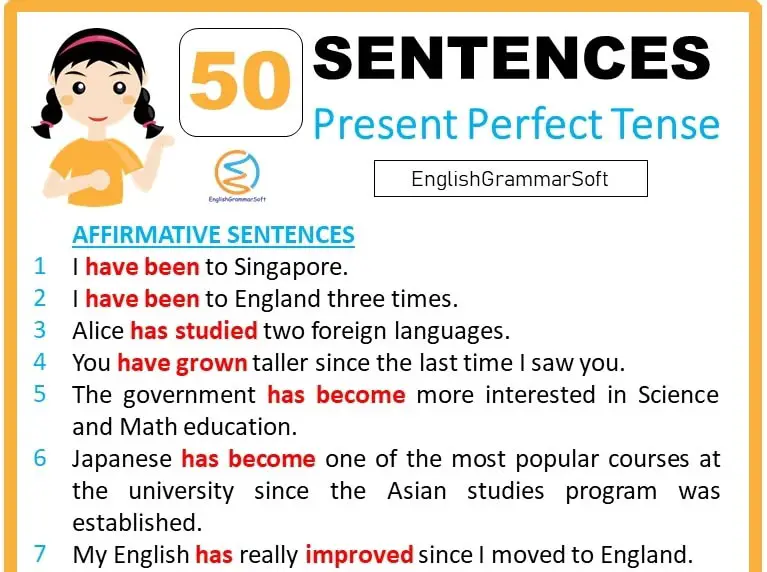



Present Perfect Tense Sentences Affirmative Negative Interrogative 50 Examples Englishgrammarsoft




The Present Perfect Tense The Present Perfect Tense Refers To An By Pmcfb Medium




Present Perfect Tense Part 2 Use And Meaning Englishtutorhub
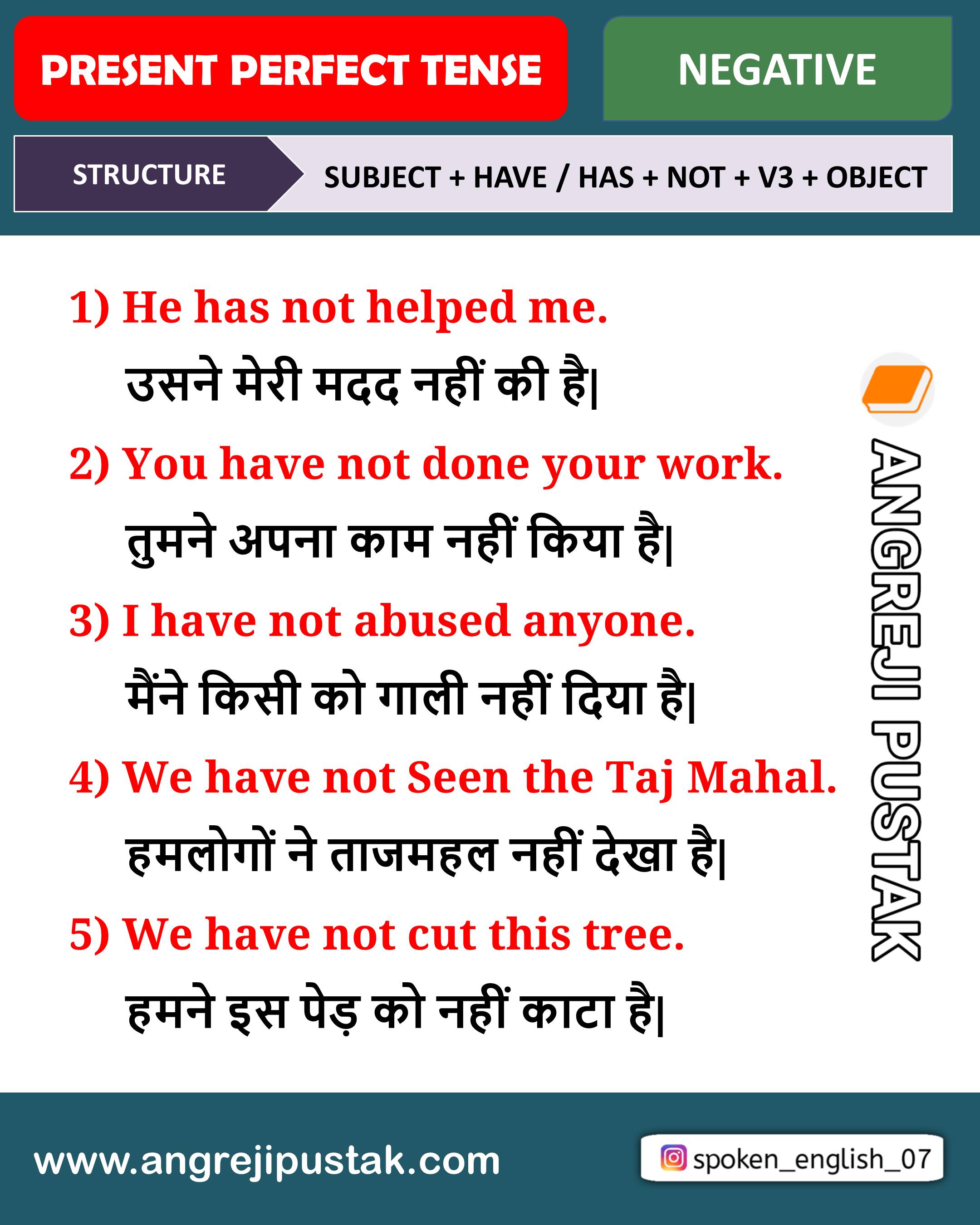



Present Perfect Tense In Hindi Use Structure Example And Translation
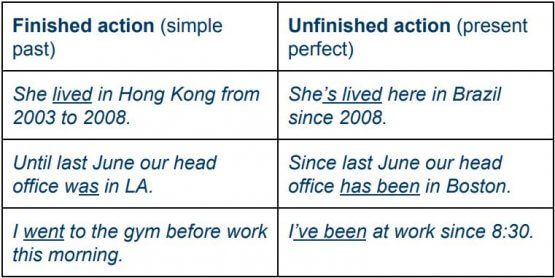



Using The Present Perfect Tense In English Wall Street English




Present Perfect Tense Black And White Version Key Included English Esl Worksheets For Distanc Perfect Tense Present Perfect Present Perfect Tense Exercises
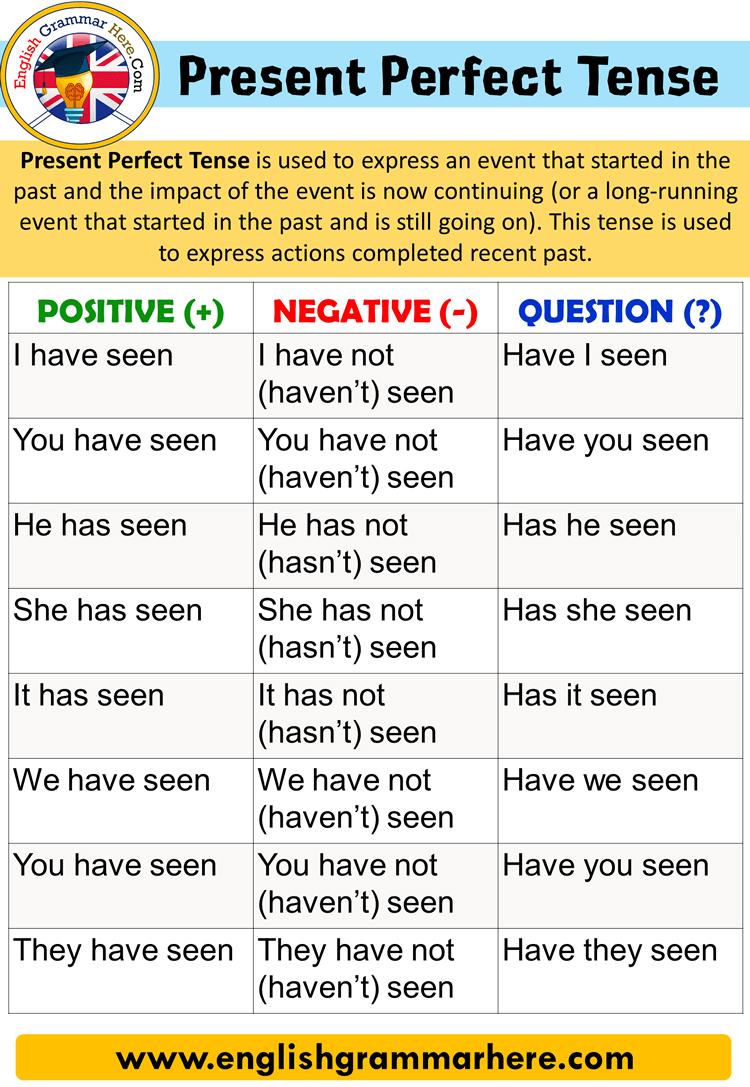



Present Perfect Tense Using And Examples English Grammar Here
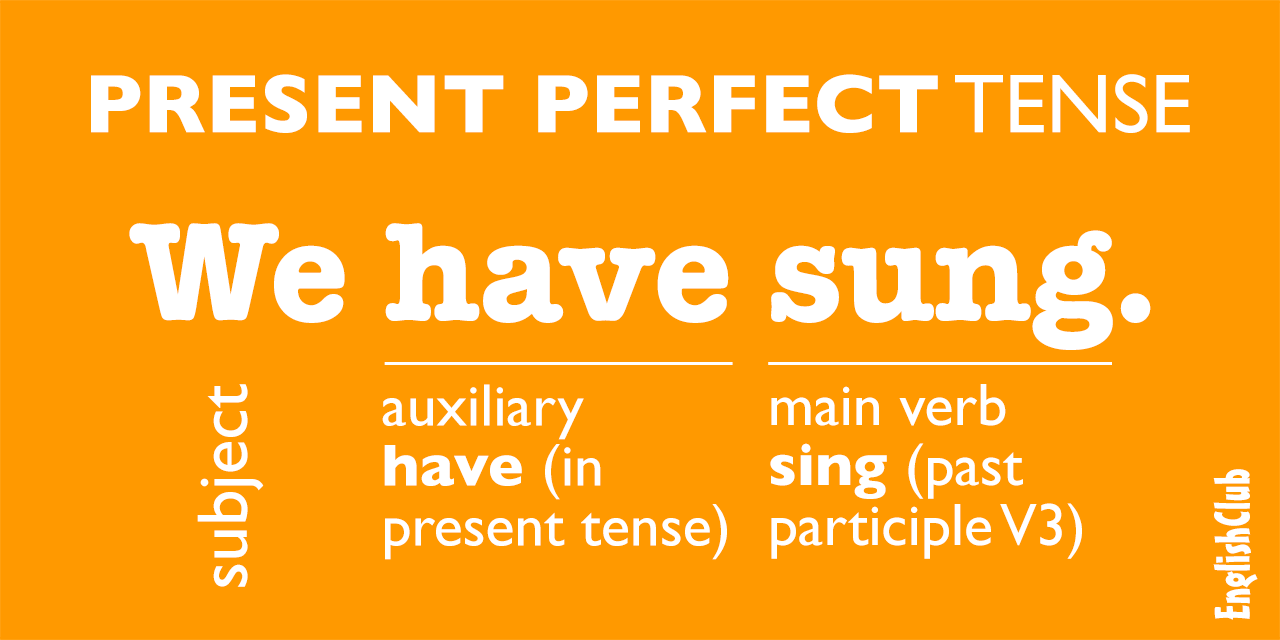



Present Perfect Tense Grammar Englishclub




Present Perfect Tense Examples Forms And Uses The Learner S Nook




Present Perfect Tense Bingo




10 Present Perfect Tense Example Sentences English Vocabs




Present Perfect Tense English Grammar English The Easy Way



Present Perfect Tense In English English Study Here
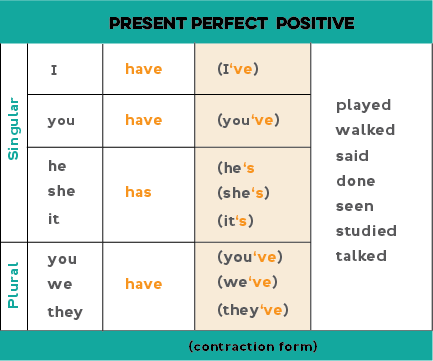



Present Perfect In English




Present Perfect Tense Exercises With Answers




Tomi Digital Present Perfect




10 Sentences Of Present Perfect Past Perfect And Future Perfect Tense English Study Here
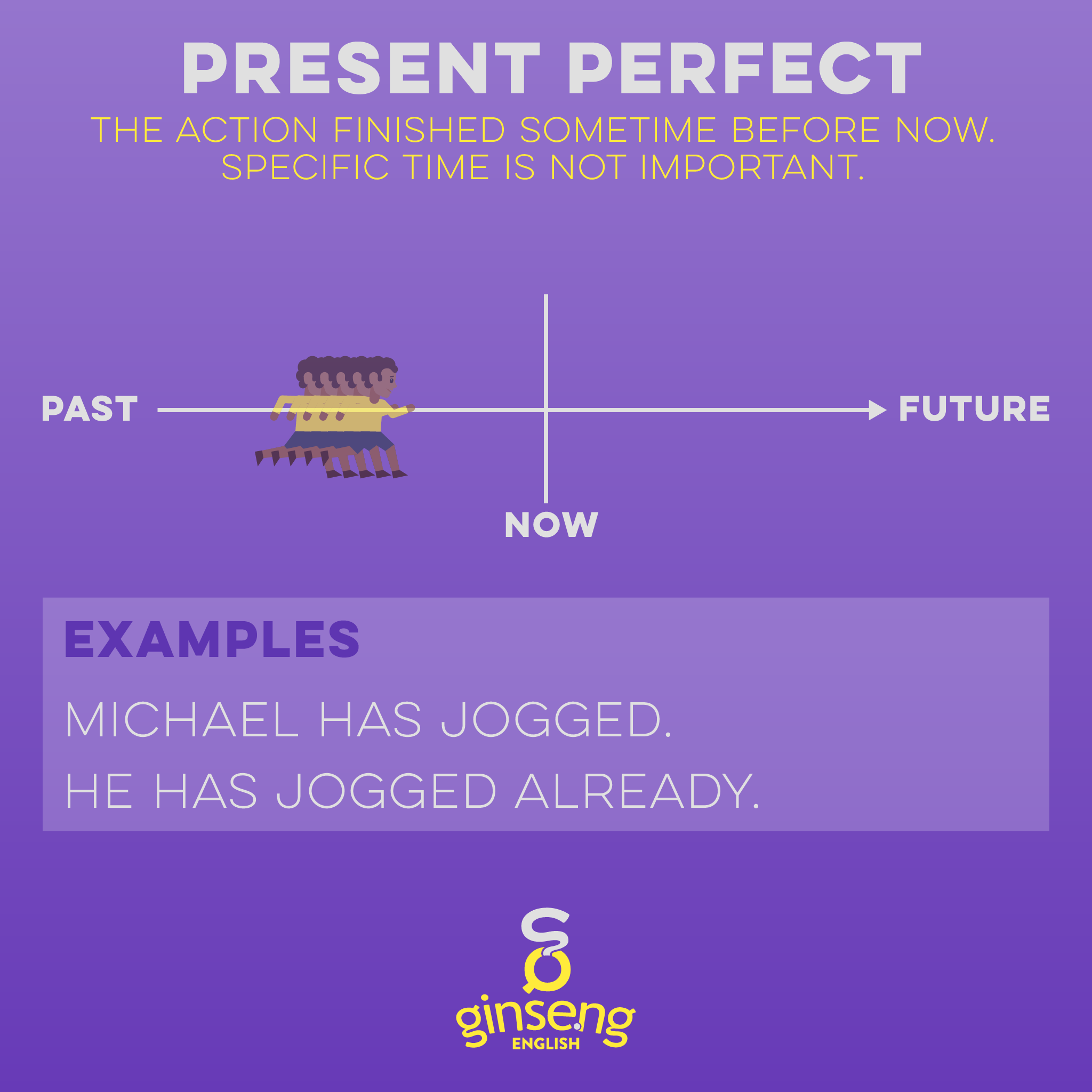



Present Perfect Tense Ginseng English Learn English




Present Perfect Tense And Use Of Present Perfect Tense




Present Perfect Tense And Use Of Present Perfect Tense




Present Perfect Tense Examples Exercise And Usage Examplanning




Present Perfect Tense Online Activity For High School



0 件のコメント:
コメントを投稿